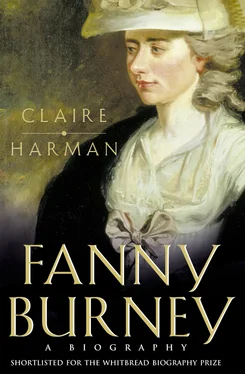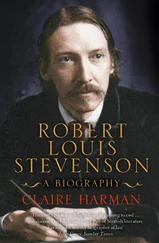‘The Burneys are I believe a very low Race of Mortals’, wrote Dr Johnson’s confidante Hester Thrale in February 1779 of her daughter’s music master and his family. The remark was scribbled in the margin of her journal as a gloss on her opinion that Dr Burney’s second daughter, Fanny, was ‘not a Woman of Fashion’. 1 This was such an obvious thing to say about twenty-six-year-old Fanny Burney that it hardly bore mentioning, unless from mild spite. The Burneys were indeed not ‘people of Fashion’; they were representative of the coming class, the intelligentsia; self-made, self-educated, self-conscious people in uneasy amity with their wealthy and well-born patrons. No doubt those patrons found it obliquely threatening that a ‘low race’ could produce so many high achievers: in 1779 Dr Burney, author, composer and teacher, was halfway through publishing his ground-breaking General History of Music ; Fanny had shot to fame the previous year with her first novel, Evelina ; another of the Burney daughters was a famous harpsichordist; and one of the sons had circumnavigated the world with Captain Cook. The Burneys, and people like them, had every reason to think they were being admired rather than sneered at.
There had been no patrimony, titles or property to smooth Dr Burney’s path in life; he had achieved his position through a combination of natural genius and unstinting hard work, his eye forever on the main chance, his ‘spare person’ worn to a ravelling. Mrs Thrale claimed not to understand the devotion Burney inspired in his children – ’tis very seldom that a person’s own family will give him Credit for Talents which bring in no money to make them fine or considerable’, 2 she wrote in her diary; but what was ‘no money’ to Mrs Thrale was riches to the Burneys, just as their reception among the ‘Great folks’ – at her own house, Streatham Park, for instance – was more than enough to make them feel ‘considerable’. Fanny Burney’s pride in the insignificant-looking man who had effected these miracles was boundless, and she saw no absurdity in describing her father as the powerful ‘trunk’ of the Burney tree. 3 Charles Burney had so successfully overcome his humble background that he really did seem to have sprung up from nowhere and to have started his family history afresh.
One of the Doctor’s other harpsichord pupils in 1779 (they were all young ladies ‘of Fashion’) had told Mrs Thrale that ‘these Burney’s are Irish people I’m sure; Mac Burneys they used to be called’. 4 Where the girl picked up this information one can hardly imagine, unless through class instinct; the Doctor did not advertise his changed name. Charles MacBurney, as he was first known, was born in Shrewsbury in 1726, the twin to a sister called Susanna and the youngest son of his father’s second family. His grandfather, James, who was of Scottish or Irish descent (accounts differ), had had an estate in Shropshire and a house in Whitehall in the late seventeenth century, but by the time of Charles’s birth the family money had all but disappeared. The story goes that the grandfather MacBurney was so disgusted by his son James running off with a young actress, Rebecca Ellis, that he disinherited him. The old gentleman rather perversely followed up this gesture of affronted rectitude by marrying his own cook and starting a second family, of whom the eldest son, Joseph, inherited most of the property. This son frittered his inheritance away, was imprisoned for debt and supported himself later by becoming a dancing-master; but despite his fall from grace and wealth, he seemed happy with his lot (or so Charles Burney, his half-nephew, thought when they met in the 1750s), and that branch of the family was noted for its cheerfulness and striking good looks.
The outcast older brother James and his teenaged bride Rebecca had their first child in 1699 and went on to have fourteen more over the next twenty years, of whom at least nine survived. James had been expensively educated at Westminster School and had had some training in portrait painting under Michael Dahl, a fashionable Swedish portraitist who had painted the Swedish royal family as well as Queen Anne and members of the English aristocracy. James’s character was not, however, one to capitalise on these advantages, being ‘volatile, & improvident’. 5 He was more concerned with keeping up his reputation as a convivial dinner-guest and bon-viveur (an activity which presumably got him away from his home full of babies) than with establishing himself in any one place or profession long enough to make anything of his talents as a painter, dancer, copyist or fiddler. As one of his children recorded later, the inevitable consequence of his fecklessness was that ‘his family was left to lament, that his talent for pleasantry, & love of sociability, overcame his prudential care, either for himself or them’. 6
Poor Rebecca MacBurney, the mother of fifteen children and still only in her thirties, died, it is assumed, some time before 1720. That was the date at which James made his second marriage, to Ann Cooper of Shrewsbury, the daughter of a herald painter. A painting said to be of Ann Cooper shows a very handsome and assured young woman. She is reputed to have had a small fortune and to have turned down an offer of marriage from the poet William Wycherley; * both these things make it the more mysterious that she accepted the proposal of James MacBurney, unemployed forty-two-year-old father of nine. But MacBurney’s charm was legendary, and perhaps Ann’s age made a difference – she was about thirty at the time. They had six children, four of whom, Ann, Richard, Rebecca and Charles, lived to great ages. The youngest child died in infancy and Charles’s twin, Susanna, at the age of about seven.
How much of a wrench the death of his twin was to the little Charles Burney is hard to tell, since he was ejected from the family at the age of three and sent with his older brother Richard to live with a woman called Ball in Condover, four miles outside Shrewsbury. He was left in the care of Nurse Ball nine years – his whole childhood – a fact which shocked his daughter Fanny when she discovered it almost ninety years later. Fanny was particularly appalled by the mother’s behaviour, which she thought ‘nearly unnatural’, 7 and she destroyed what evidence there was of the ‘niggardly unfeelingness’ and neglect she felt her father had suffered. By editing the episode out of her father’s papers, Fanny hoped to conceal ‘a species of Family degradation’ from public view; but no member of the public could have been more upset by it than she. She had known her grandmother Burney all her childhood, when the widow was living in Covent Garden with her two unmarried daughters. It must have seemed astonishing that this same grandmother, so much part of the family background, had, for whatever reason, opted out of caring for her own sons all those years before. Fanny’s novels are full of orphaned or abandoned children laid open to peril through lack of parental care; in them, bad parents are punished or vilified and made to repent, but Ann Burney seemed to have committed the cardinal sin of unfeeling and got off scot-free.
Charles Burney himself did not seem embittered by the long separation from his parents, although his intense affection for his own children (especially when they were little) and his apparent desire to establish a solid, admirable and outstanding Burney dynasty within one generation may have been reactions against it. The splitting up of the MacBurney family in the late 1720s was probably necessitated by lack of money. James went back to London temporarily to take up work as an actor at the new Goodman’s Fields Theatre at about this time; perhaps he and his wife felt that the boys would be better off out of the way, getting some education at Condover village school. The fact that Ann Burney’s later relations with her sons were detached could of course have been the effect as much as the cause of her not bringing them up herself, but Fanny seems not to have considered the kind of harsh compromises that might have to be made when a couple with five children of their own (and nine older semi-dependants) find themselves close to destitution. The threat of poverty is the most potent danger that faces the heroines of Fanny Burney’s novels; all other evils stem from it. But it is also something that never really overcomes any of them. Poverty brings out the best in her heroines: they act with dignity, expand their sensitivities, and support themselves by plain sewing, teaching, governessing or becoming ladies’ companions. The charting of a gentlewoman’s descent into wage-earning carries a sort of illicit thrill for author and reader alike (one can say quite clearly a sexual thrill, because of the unspoken threat of prostitution, the obvious last-ditch job-opportunity for women), but class always ultimately protects Burney’s heroines from crossing the line into ‘degradation’.
Читать дальше












